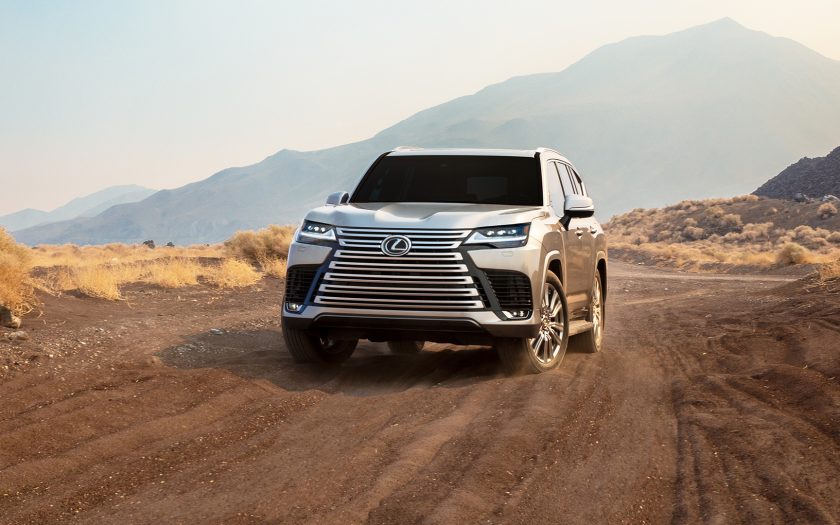LEXUS HAS UNVEILED A NEW LX FLAGSHIP SUV that combines the ultimate in rough-road driving performance with the supreme refinement and craftsmanship for which the luxury lifestyle brand is renowned.
High-output twin-turbo V6 engines – 305kW/650Nm 3.5-litre petrol in the LX 600 or 227kW/700Nm 3.3-litre diesel in the LX 500d – are coupled with a new 10-speed automatic transmission and enhanced driver-aid technologies for exceptional off-road capability.
At the same time, refined on-road performance has been achieved by incorporating the Lexus Driving Signature, a unique dynamic philosophy delivering seamless and linear responses that are faithful to the driver’s intentions.
Underpinning the new flagship is a highly rigid new GA-F platform, weight reductions of more than 100kg, improved front-rear weight balance and innovative features including Lexus-first dual display screens on the dashboard and the security of fingerprint authentication for the push-button ignition.
Lexus has globally expanded the LX range to deliver additional personal luxury experience by introducing two new model grades – F Sport and four-seat VIP.
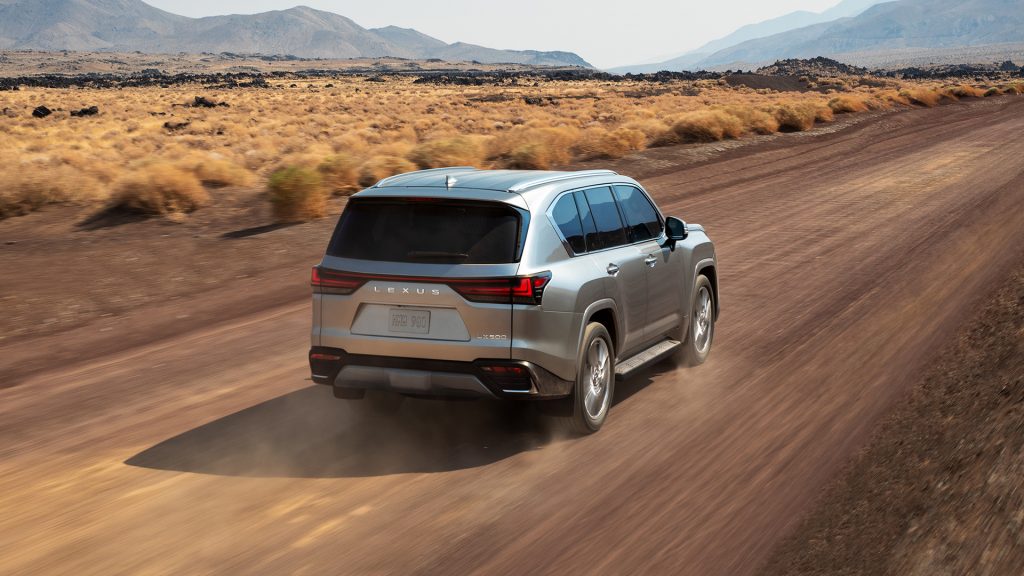
The all-new LX is scheduled to arrive in Australia in 2022. The local line-up is to be confirmed.
Cumulative global sales of approximately 500,000 vehicles include more than 6700 in Australia since the model debuted locally in 1998.
Lexus Australia Chief Executive Scott Thompson said the new LX combines the supreme human-centred luxury that distinguishes the brand with the most capable off-road vehicle ever produced by Lexus.
“Lexus has continued to refine the founding concepts of the LX: reliability, durability, high-quality, ride comfort, an exceptional driving experience and the ability to expand our customers’ diverse life experiences,” Mr Thompson said.
“Advanced technologies and features in the new LX instil confidence, while the drivetrain’s superior off-road capability enables owners to travel just about anywhere – and return home safely.”
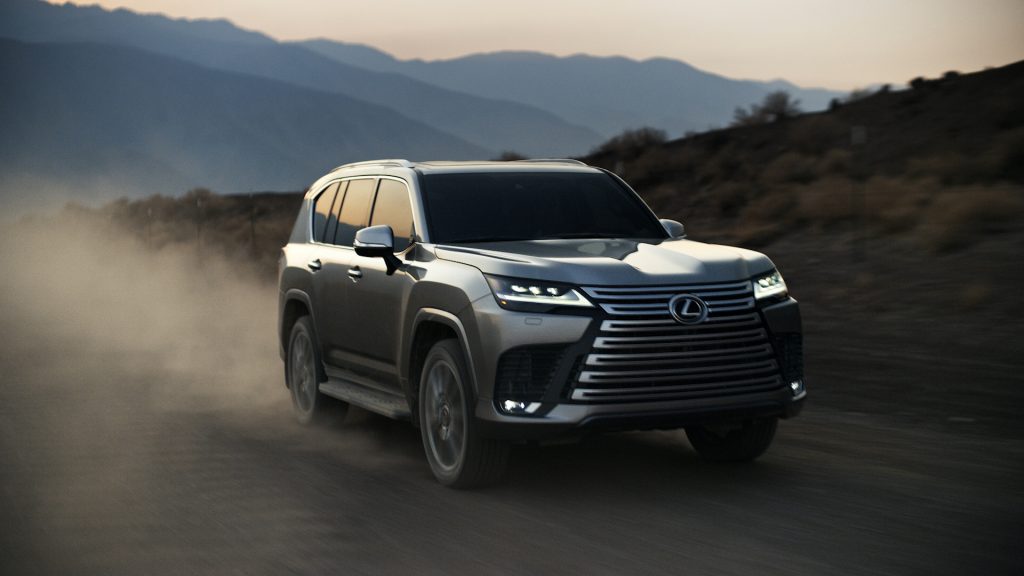
Next-generation design language
The Lexus LX exterior is built on a broad 2850mm wheelbase.
Windscreen pillars have been moved back to create a dynamic cab-rear silhouette, complemented by a stout torso and up to 20- or 22-inch tyres, the latter being the largest in the Lexus line-up.
A new three-dimensional spindle grille is formed by seven sets of floating bars, creates a seamless and frame-free structure that is stylish and ensures the high-level cooling performance required for a twin-turbo engine.
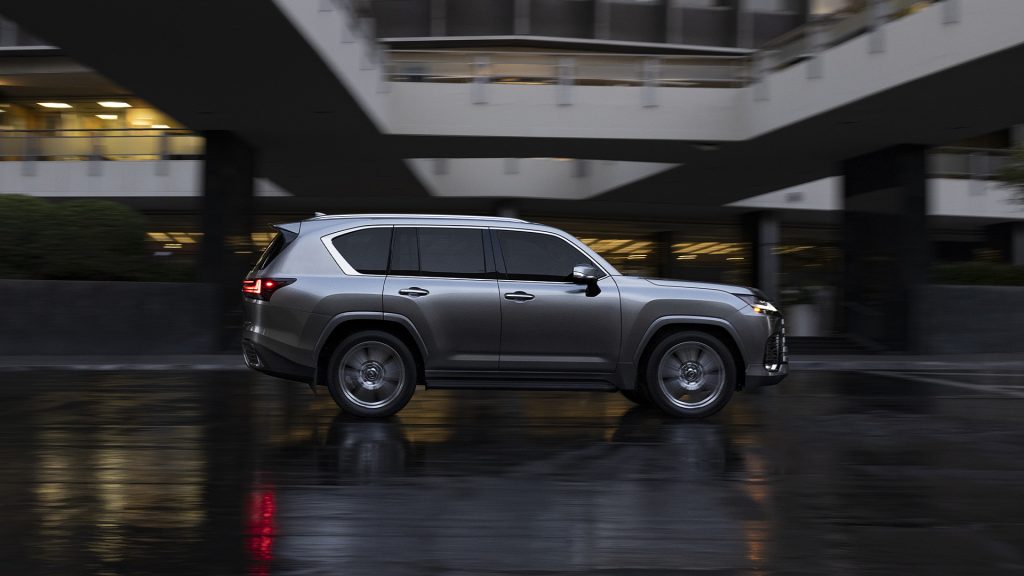
The LX side view expresses a strong sense of unity and mass, leading to rear-quarter pillars that narrow from the roof to the back window.
As with the NX, the new “LEXUS” brand badge replaces the L-shaped logo on the rear of the vehicle – a symbol of the next generation of Lexus.
The new LX cockpit is based on the Tazuna Concept. Displays, gauges and switches are arranged intuitively, enabling the driver to control the vehicle with minimal posture change.
The angle of the steering wheel, pedals and footrest as well as the shape, hip-point and hold characteristics of the seats provide a driving position that allows the natural placement of the hands on the steering wheel and the feet on the pedals.
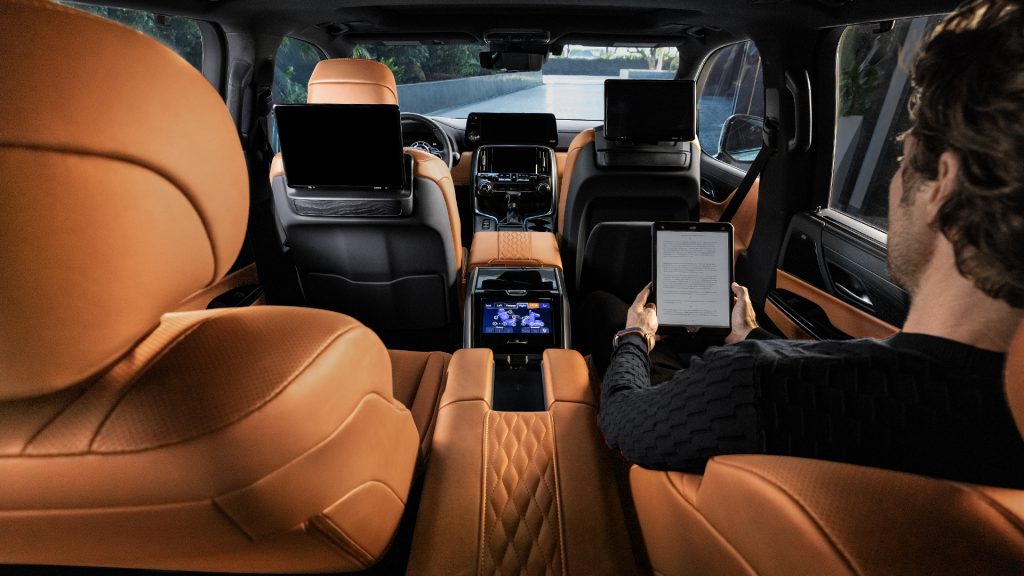
The gap between the accelerator and brake pedals is now wider for more precise pedal operation. Accelerator pedal components are more rigid with a shorter stroke.
Attention to detail for off-road driving includes assist grips with carefully designed thickness and angle as well as soft padding on the shoulder and lumbar areas of the front door trim for added protection, comfort and security.
Cushion pads in the LX front seats offer high stability and pressure dispersion, suppressing lateral swaying of the hips and reducing upper body tilt.
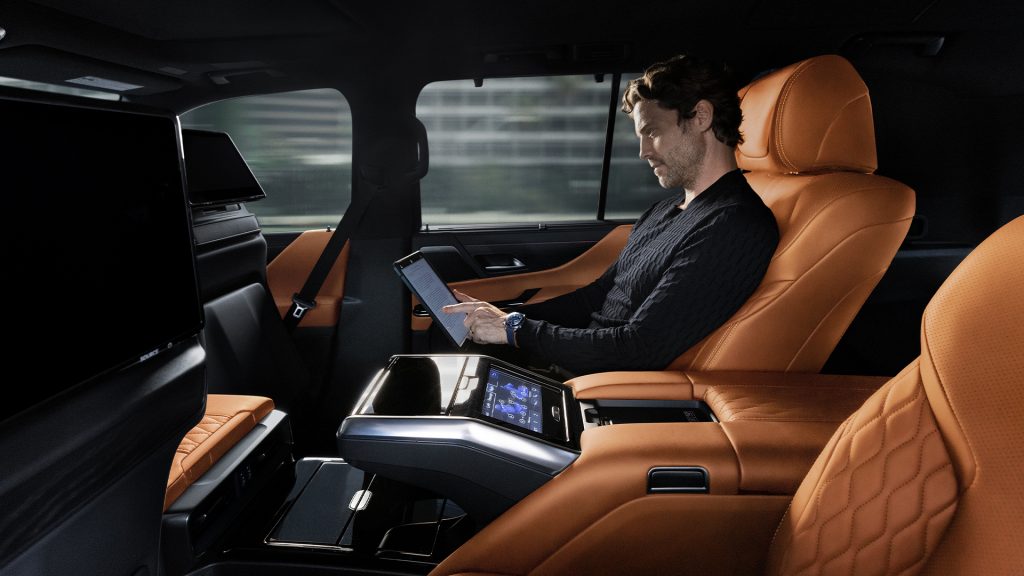
Second-row seats have been designed to ensure ease of access, while the height and cushioning of the side supports provide improved hold.
Third-row seats in seven-seat variants can be electrically reclined to adjust the cargo space according to owner requirements. A new multi-seat “auto arrange” switch in the cargo area enables all seats, including the front seats, to be moved to create a vast cargo space. A “walk-in” function electrically folds and raises the second-row seats to make it easier to get in and out of the third-row seats.
Expanded global line-up
Lexus has globally expanded the LX model range with a new four-seat VIP grade for the LX 600 and the introduction of F Sport grades, both of which are firsts for LX. Seven-seat and five-seat model grades will be available globally.
The VIP grade is distinguished by four independent seats for elegant, safe and comfortable travel. Taking a cue from the neutral body posture advocated by NASA, the front passenger seat has been moved forward and can be adjusted up and back to ensure a wide forward view. Seat-recline angle can be controlled up to 48 degrees for ultimate comfort.
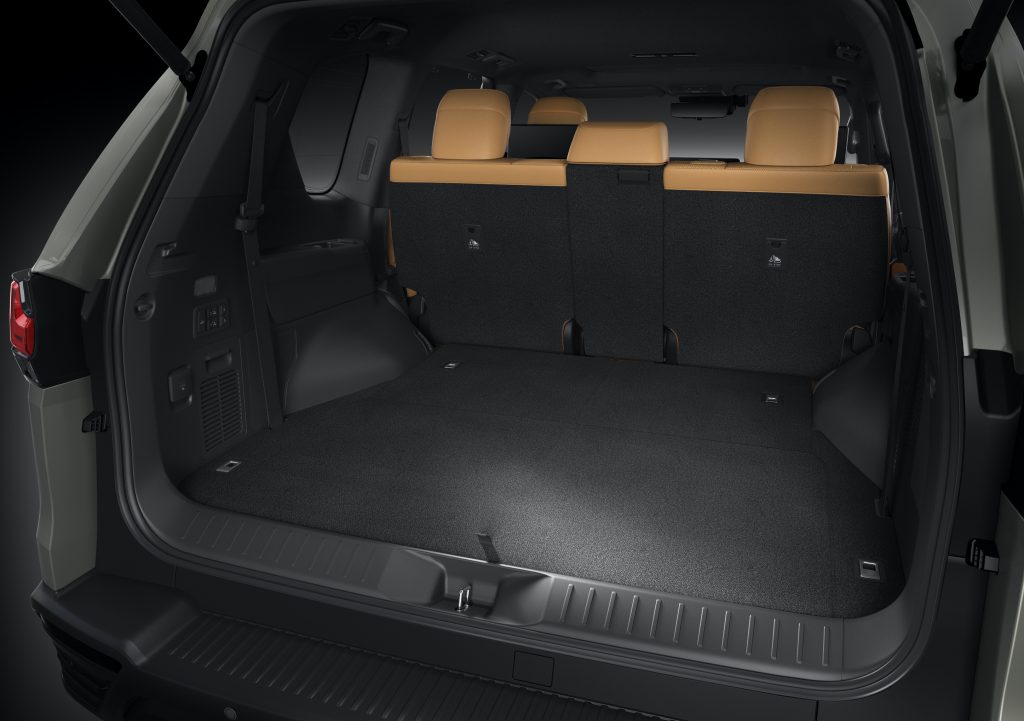
Rear seats can also be reclined up to 48 degrees. A display screen behind the front passenger seat can be folded down, creating an open and relaxing interior with maximum leg room of 1000mm. This position can be achieved in a single action using the “relax” mode button on the rear control panel. A footrest behind the front passenger seat can also be deployed for a strain-free posture from head to toe.
The VIP rear seats feature concave headrests, seatbacks, and cushions that gently wrap around the head, hips, and lower body to provide support against lateral G-forces and road-surface inputs when driving around curves. Soft urethane in the seat cushions and backs offers superior vibration absorption that suppresses unpleasant vibrations even during off-road driving.
Comfort features such as sunshades on the side windows, special reading lights, and a rear-seat display combine to provide a comfortable private space for relaxing.
VIP grade roof vents provide shower-like air-conditioning while further vents have been added to the sides of the base of the rear-centre console.
The rear control panel has been carefully designed for ease of use, down to the smallest details in terms of placement and shape, including a convenient palm rest.
Lids for cup holders can serve as a note table coated with a scratch-resistant self-healing paint. A large console box provides ample storage space as well as DC power supply, USB, and headphone jacks.
The VIP grade is equipped with 22-inch forged alloy wheels adorned with high-gloss paint for a deep three-dimensional effect.
F Sport grades come with exclusive equipment and styling features that clearly indicate a more engaging driving experience.
The exterior features the F Sport mesh spindle grille and exclusive black 22-inch forged alloy wheels with bright machined highlights.
Inside, the steering wheel and shifter feature perforated leather for a sporty effect and improved grip, while the F Sport emblem is applied throughout to reinforce the image of driving performance.
A specially designed seat adopts firmer side supports and cushions to maintain a stable driving posture against lateral g-forces.
For ideal response and handling, F Sport variants feature front and rear performance shock absorbers, a Torsen limited-slip differential and a rear stabiliser, as well as special tuning of the electric power steering and Adaptive Variable Suspension (AVS).
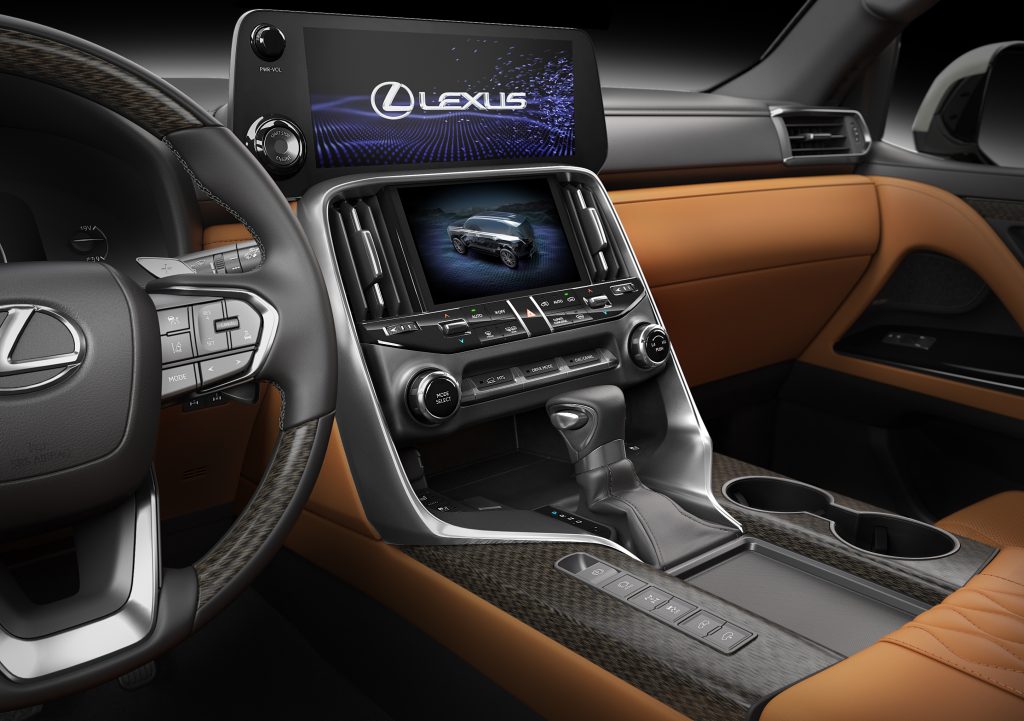
New platform and significant weight reduction
The traditional body-on-frame LX structure has been renewed from the ground up to ensure off-road performance and on-road steering response, rear grip, excellent ride comfort, and driving quality that is distinctive of Lexus.
By adopting the new Global Architecture-F (GA-F) platform, Lexus has also achieved a drastic improvement in driving performance, collision safety and quietness.
The new LX maintains its 2850mm wheelbase, which has demonstrated high-level performance on rough terrain and results in a spacious interior.
Multiple advances have resulted in significant weight reduction while enhancing strength and rigidity. These include the world’s first curved tailored welded blank technology, in which thick and thin steel plates are joined by laser welding and then press-formed.
Additional spot welds, greater use of high-tensile steel and application of structural adhesives around the door openings and on the floor have also been adopted, resulting in a frame that is 20-per-cent more rigid.
Combined with the use of aluminium for the bonnet, roof, doors and tailgate panels – the first Lexus with an aluminium roof – the new LX is also more than 100kg lighter.
The powertrain has been shifted 70mm toward the rear of the vehicle and 28mm downward, helping improve front-rear weight balance and lower the centre of gravity.
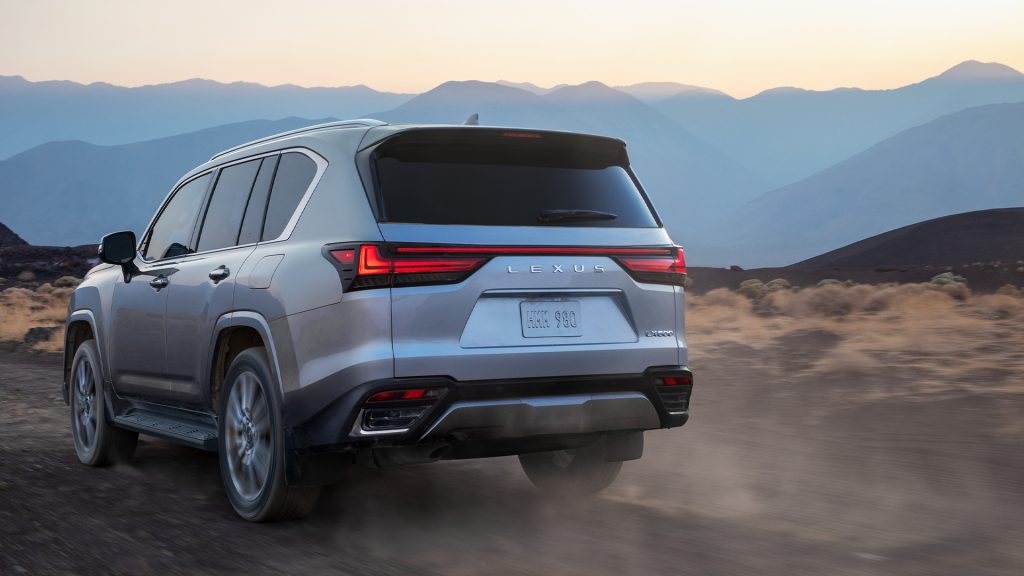
New powertrains
The 3.5-litre V6 twin-turbo petrol engine (V35A-FTS), from the Lexus LS flagship, delivers maximum power of 305kW and peak torque of 650Nm through its D-4ST direct-injection system.
The 3.3-litre V6 twin-turbo diesel engine (F33A-FTV) with variable nozzles delivers 227kW and 700Nm, as well as excellent fuel economy (although this is relative!).
A highly responsive primary turbocharger contributes to powerful acceleration at low speeds, while the large intake volume of the twin-turbochargers contributes to smooth acceleration at high speeds.
An all-new 10-speed transmission delivers ideal gear steps and expanded gear ratios. At the lower end, it provides strong off-the-line acceleration and supports low-speed off-road driving, while the top end reduces engine revs for more refined high-speed driving and improved fuel economy.
The oil-pan structure is designed to provide optimum oil circulation, even on a 45-degree incline while bearings and oil seals offer enhanced protection for water-crossings and dusty off-road environments.
Supporting off-road driving performance and on-road handling stability, the front suspension features a high-mounted double wishbone setup with the geometry and coil springs tuned for stability and ride comfort. Suspension stroke offers 15mm more rebound, particularly suited for rough roads.
For the trailing-link rigid rear axle, the suspension arms and shock absorbers have been refined for stability and ride comfort. The shock absorbers are more vertical for increased damping, offering a 20mm increase in the rebound stroke.
Active height control (AHC), which can automatically and optimally adjust vehicle height, now offers three height settings while the vehicle is moving (Normal, Hi1, Hi2) and a “Low” position to make it easier to get in and out of the vehicle. A spring-rate switching device, now adopted for the rear as well as the front wheels, reduces the time needed to adjust ride height. AHC also responds to changes in vehicle posture, such as the amount of pitch and roll, promoting stability during turning, acceleration, and deceleration by optimizing the spring rate as needed.
Adaptive Variable Suspension (AVS), with a new linear solenoid valve, provides intricate and smooth control based on the road surface and driving conditions. Damping force can be changed to support individual drive modes. It can be set low for a comfortable ride over bumps in city driving and it can be set high to provide a flat, stable cornering.
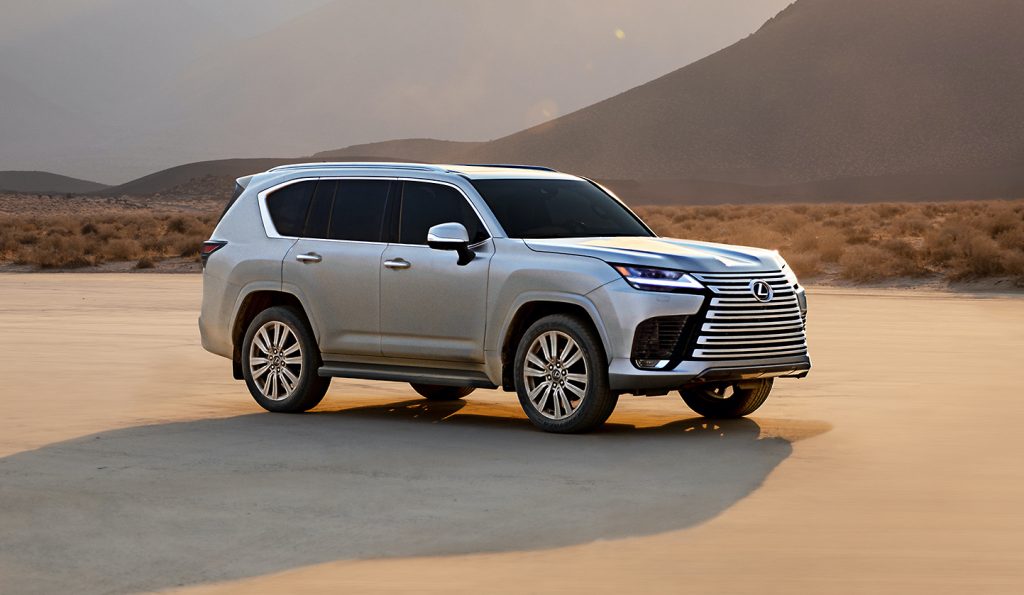
New off-road driving technologies
The all-new LX boasts advanced new and evolved technologies that support off-road driving, providing an even greater sense of security in harsh environments.
Approach, departure and ramp-over angles are maintained, as are the maximum stable inclination angle of 44 degrees, climbing ability of 45 degrees and maximum wading depth of 700mm.
Off-road driving is supported by Multi-Terrain Select, which now operates in high as well as low range. It offers optimum control of brakes, driving force and suspension by allowing the driver to choose from six modes – Auto, Dirt, Sand, Mud, Deep Snow and Rock. Auto mode, adopted for the first time, can adapt to every condition from extremely low-speed driving on rocky roads to high-speed driving on unpaved roads.
Crawl Control and Downhill Assist Control are designed to reduce the burden on drivers, allowing them to concentrate on steering. Crawl Control is particularly useful on highly uneven off-road surfaces or slippery road surfaces; it can automatically propel and brake the LX based on five driver-selectable speed settings up to 30km/h, while Downhill Assist Control controls braking at all four wheels to provide stable descent on steep slopes without locking the wheels.
Electronic differential locks for both the front and rear wheels contribute to improved performance in a variety of off-road environments.
The LX is fitted with a new electric power steering that uses the motor and reduction gear instead of conventional hydraulics to deliver a responsive, distinctly Lexus sensation.
A new electronic brake system delivers maximum braking force while being significantly quieter, reflecting the high-quality driving of Lexus. It also works with Multi-Terrain Select in off-road driving to provide detailed braking control to counter slipping or spinning wheels.
The Multi-Terrain Monitor uses four cameras (front, rear and under the wing mirrors) that can help the driver observe conditions around the vehicle, providing a clearer picture of the surrounding environment and a sense of security.
Composite images of the foreground taken in advance are provided to the driver as transparent-underfloor images, displayed on the main 12.3-inch dashboard-mounted screen. By superimposing the vehicle and wheel position over this image, the driver can check underfloor conditions and front-wheel position.
When reversing, a world-first “back underfloor view” uses similar composite images to help the driver check the position of the rear wheels and understand the location of obstacles and details of the road surface.
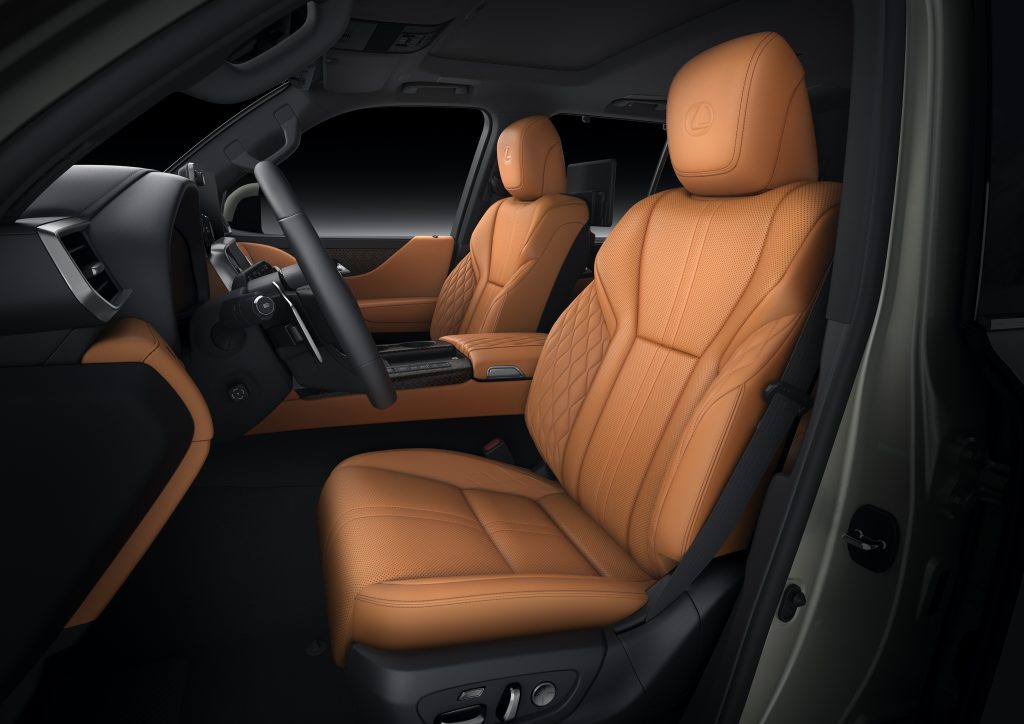
Human-centred convenience
The all-new LX is the second Lexus production model to introduce the advanced Tazuna Concept, a new approach to cockpit design that debuted in the recently unveiled NX.
The Japanese word “tazuna” – derived from the reins used to control horses – further evolves the brand’s human-centred philosophy that is the foundation of all vehicle development. In the new LX, it enables the driver to connect intuitively with the vehicle and concentrate more on driving operations.
The all-new LX offers a state-of-the-art multimedia system that is designed to provide easy-to-see information so that it can be operated as easily as a familiar smartphone or tablet.
A variety of menu selection switches are always displayed as icons on the driver’s side while a new function allows front passengers to call up frequently used controls.
The system includes a hybrid navigation system that combines a conventional in-vehicle navigation system with a connected navigation system that utilises Cloud-based map information.
The instrument panel features the first Lexus dual display. The 12.3-inch upper screen shows navigation and audio controls and serves as the Multi-Terrain Monitor during off-road driving. The lower 7.0-inch touch display shows the heater control screen and serves as a driving-support screen for Multi-Terrain Select.
Dual screens allow the driver to display the camera image on the upper screen while simultaneously displaying vehicle status in real time on the lower screen. This offers the driver more off-road information without switching the screen display.
An anti-reflective coating assures a clear screen display while bonding technology fills the gaps between the glass panel and liquid crystal display to reduce glare.
The colour and font of the navigation screen can be selected from five different themes.
The latest voice-recognition technology, which supports “Hey Lexus!” natural speech recognition, means the driver can activate the system without having to operate switches or stop playing music.
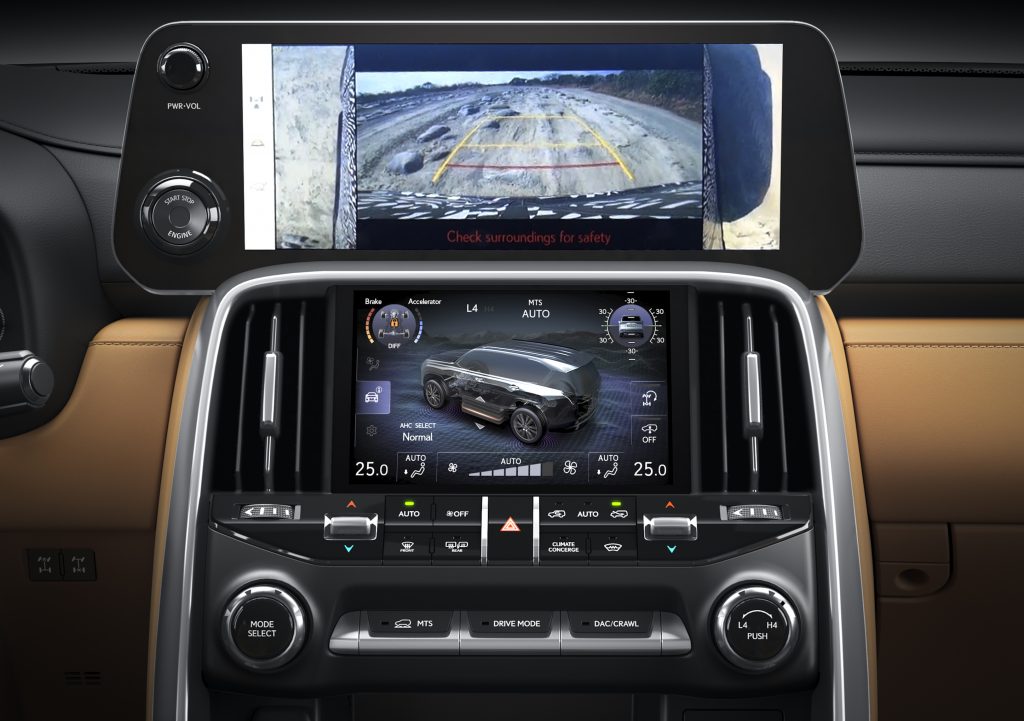
Apple CarPlay and Android Auto compatibility debuts in the all-new LX.
A new web browser function has also been set up that allows users to browse websites for services such as news, blogs, music and online videos through an internet connection.
This function can be activated through the vehicle’s new data communication module, which also enables safety and security features including SOS call, automated collision notification, and stolen vehicle tracking.
The My Settings function, for registering personal settings such as driving position, now supports multimedia settings such as navigation and audio. Users can be identified by their smartphones as well as their smart keys. Multimedia settings are stored in a data centre and can be used in another vehicle.
Another Lexus first is fingerprint authentication through a sensor installed in the centre of the ignition button. The engine will not start unless the fingerprint matches the details supplied for the vehicle.
The LX is equipped with a 10-speaker Lexus Premium Sound System or a Mark Levinson Premium Surround Sound System with 25 speakers, the highest number ever in a Lexus, including a large-capacity subwoofer that utilises the body frame.
An available new-generation rear-entertainment system boasts an intuitive touch panel that uses glass bonding technology to provide a clear, low-reflective display.
The VIP grade includes a horizontal tilt mechanism for the screen. The system can be operated from the front display or the rear seat centre console panel, contributing to forward visibility for rear-seat passengers.
Advanced safety features
Lexus is advancing the development of safety technologies to eliminate traffic casualties, including adoption of the Lexus Safety System+ for the all-new LX.
The pre-collision safety system can detect bicyclists during the day and pedestrians in low-light conditions. At intersections, it can detect oncoming vehicles before right turns and pedestrians crossing the street when turning right or left. A further new feature is emergency steering assist.
Artificial Intelligence has been applied to improve the lane-tracing assist function, resulting in smoother and less disruptive steering assist designed to keep the vehicle in the centre of the lane.
Dynamic radar cruise control gains a curve speed control function that decelerates the vehicle in advance according to the size of an approaching curve.
Road-sign assist uses a camera to capture major road signs and displays them on the vehicle’s multi-information display.
BladeScan adaptive high-beam system broadens the range of illumination, enabling the driver to recognise pedestrians and road signs without impeding the visibility of other road users.
General Disclaimer: All specifications and features are based on global information and may differ to those available in Australia.
